mdC
memoria digital de Canarias
2003 2023
mdC

Descargar y escuchar, mientras hacemos otras cosas.
En cualquier parte y sin conexión.
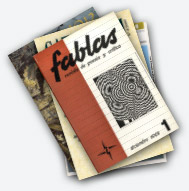
Publicaciones seriadas de Canarias de estimable valor y significativo contenido en el ámbito de la investigación y los estudios locales.
Ver colección
Los textos de ayer y hoy adaptados
para descargar y leer cómodamente.
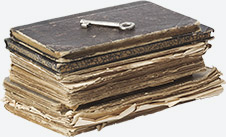
Memoria digital de Canarias (mdC) ofrece acceso a todo tipo de documentación impresa o manuscrita, gráfica y multimedia.
Textos Imágenes Multimedia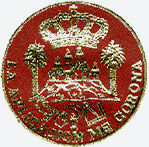
Archivo histórico de la Real Sociedad Económica de Amigos del País de Gran Canaria.
Ver colección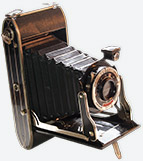
En el año 2004, don Jaime O'Shanahan Bravo de Laguna donó su archivo fotográfico a la Universidad de Las Palmas de Gran Canaria.
Ver colección
Presenta los materiales recolectados por Maximiano Trapero en las Islas Canarias referidos a la literatura oral.
Ver colección
Recuperando el patrimonio intangible tradicional de la capital grancanaria, caracterizado por su pasado cosmopolita y aportación de culturas diversas.
Ver colección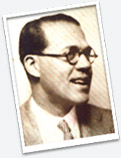
El archivo de este prestigioso arquitecto, está compuesto por más de mil proyectos que reflejan su actividad profesional a lo largo de su vida.
Ver colección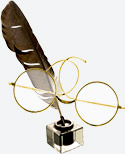
Vida y obra de este singular poeta teldense, una de las más detacadas figuras del modernismo poético canario.
Ver colección
Digitalización y descripción de las 1176 actas, en 5701 imágenes, de las Juntas Generales (1694-1950) y las Juntas de Gobierno internas (1868-1947)
Ver colecciónmanuscritos
libros
artículos de revista
imágenes
audios
vídeos
El origen del silbo canario data de mucho antes de la llegada de conquistadores. Fue creado por aborígenes, primeros habitantes de nuestras maravillosas ínsulas, cuando todavía usaban el guanche como idioma. Es a partir del siglo XVI cuando el silbo empieza a adaptarse al castellano hasta llegar a la actualidad. Ampliamente usado en todo el archipiélago, la aparición de la tecnología, la emigración de las islas y la llegada de nuevos habitantes foráneos redujo el papel del silbo en el resto de las islas. La Gomera siempre ha sido su mayor estandarte debido a su geografía distintiva, repleta de valles, barrancos y muros, el lenguaje fue clave para el desarrollo de la agricultura y ganadería local. En la colección multimedia de Memoria digital de Canarias, se pueden visionar documentales, así como otra documentación, que muestran la importancia de este bien cultural de nuestras Islas Afortunadas, como el titulado El Silbo Gomero, lenguaje silbado de la isla de La Gomera.
En La Palma se ha logrado materializar el camino trazado en las estrellas. Caminar en la oscuridad de La Palma, acerca al apasionante mundo de las estrellas. La calidad de su cielo las pone no solo al alcance de la mirada, sino que casi pueden tocarse con los dedos, terminando por sentir comprender más el universo. Esto lo saben los habitantes de esta isla y las personas investigadoras del Instituto de Astrofísica de Canarias (IAC), cuyas sedes en La Palma están en el Centro de Astrofísica y en el Observatorio del Roque de los Muchachos. Este observatorio internacional forma parte de la red de Infraestructuras Científicas y Técnicas Singulares de España, que permite la observación internacional a través de los telescopios de esta cima, en una isla declarada Reserva de la Biosfera por la UNESCO. La Palma es un paraíso para el senderismo y otras actividades de ocio activo, que se encuentran relacionadas con el medio natural, reconocida como Reserva y Destino Turístico Starlight.
El archipiélago cuenta con una amplia oferta de instalaciones, con profesionales cualificados y prestaciones para la preparación física. Actualmente hay más de una treintena de centros deportivos de alto rendimiento y de tecnificación especializados en entrenamiento profesional y medicina deportiva, donde se ofrecen dietas específicas y un servicio médico altamente cualificado para cuidar la salud. Por las características y la alta calidad de las instalaciones, las islas pueden llegar a acoger a más de 3000 deportistas de alto nivel al mismo tiempo. La particular orografía de las Islas Canarias, debida a su origen volcánico, permite pasar rápidamente del nivel del mar a más de 1800 metros de altitud, lo que supone una ventaja para aumentar el rendimiento. Celebramos eventos deportivos de alta competición en circuitos internacionales. En nuestro portal de referencia encontrarás información al respecto de este tema.
El archipiélago canario presenta una gran biodiversidad de seres vivos contabilizándose cerca de 15.000 especies. En cuanto a la fauna, los invertebrados son el grupo de seres vivos más diversificado que vive en las islas. Destacan los insectos, que están presentes en todos los medios del archipiélago: el suelo, las rocas, las hojas, las flores, los árboles, etc. Respecto a la flora, las plantas constituyen el grupo más numeroso, integrado por musgos, helechos, gimnospermas y angiospermas. Nuestra diversidad biológica aumenta en importancia teniendo en cuenta que muchos de estos seres vivos son autóctonos de Canarias, especies que solo viven en esta región del planeta. De hecho, es la región de España que cuenta con mayor número de endemismos. En cuanto al material bibliográfico albergado por este repositorio documental, contamos con múltiples formatos como el multimedia, que ofrece audiovisuales y documentos sonoros sobre esta materia, concretamente de botánica y también para el estudio de la fauna.